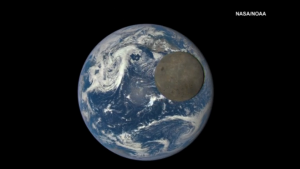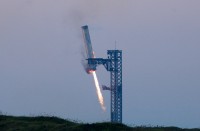
AUGUST 7 (Reuters) — A satellite positioned a million miles (1,609,344km) from Earth in between the moon and the sun captured new images of the dark side of the moon on July 16.
The images were taken by a NASA camera onboard the Deep Space Climate Observatory (DSCOVR) satellite.
An animation of the photographs shows the moon passing in front of the earth as it rotates.
The moon is seen moving over the Pacific Ocean near North America.
The photographs were taken by NASA’s Earth Polychromatic Imaging Camera (EPIC), a four megapixel CCD camera and telescope.
In September, the camera will be used to provide scientific observations of the ozone, vegetation, cloud height and aerosols in the earth’s atmosphere, NASA said.
NASA will then post the colour images online, available daily 12 to 36 hours after they are taken.
Such images will be critical to the accuracy and warning time for space weather alerts and forecasts from NOAA (National Oceanic and Atmospheric Administration), NASA said.
The first images of the dark side of the moon were taken in 1959 by the Soviet Luna 3 spacecraft.
The moon only ever shows one of its sides to the Earth because it is tidally locked in place to the Earth.







